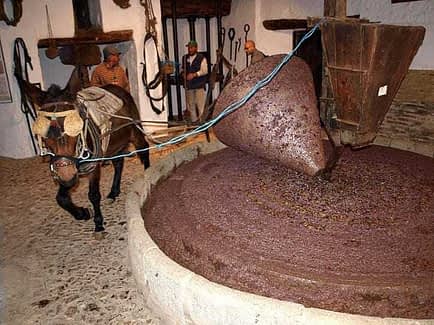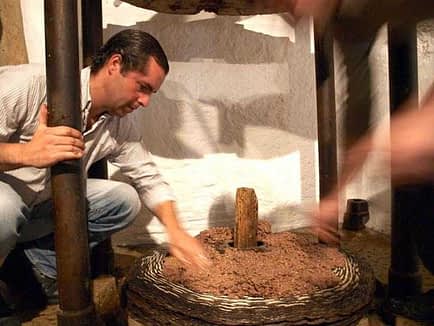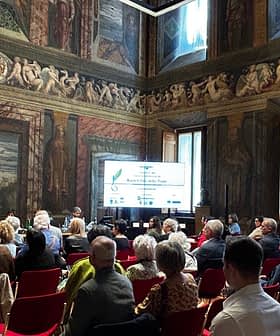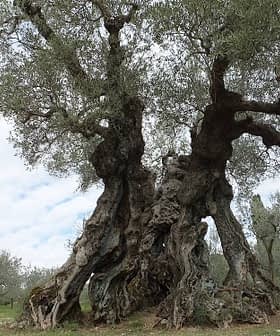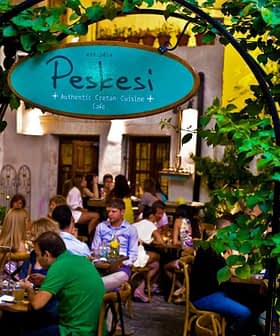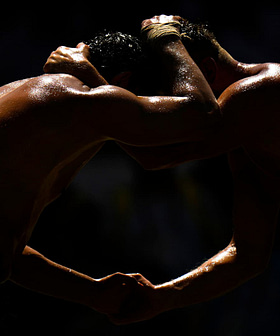The Olearum Culture and Oil Heritage association organized recently the first edition of “The Milling of Riogordo” which recreated the traditional production of olive oil in the Ethnographic Museum of Riogordo (Málaga) bult in the XVII Century.
This event was co-presented by the Ethnographic Museum, and the City of Riogordo contributed to present the old customs and ways of making the famous “Verdial Liquid Gold” of the Axarquía region, where Verdial olive oil is one of the products for which Malaga is renowned.
The program involved extensive activities and conferences for those interested in traditional and folk customs.
Riogordo is a beautiful village nestled in the Axarquia region, whose inhabitants from immemorial days have dedicated themselves to the culture of olive oil, and where the Verdial of Velez variety, native of the region, stands as unique in the world.
The activities began in the facilities of Agro-Olivarera Riogordo SCA, a cooperative formed by the union in 2004 of two olive cooperatives founded in the early 60’s with the aim of unifying its more than 1,300 partners. Attendees were able to visit its modern facilities and see the current process of elaboration of the Axarquia’s olive oil.
They also had the opportunity to enjoy a traditional miller’s breakfast made from natural orange juice, bread and extra virgin olive oil produced in this cooperative. After having a nice time, the next stop of the day was to visit the Ethnographic Museum of Riogordo.
The history of this museum started in July, 1998 when Enrique Godinez Luque and his wife, Josefa Sanchez Bermudez, bought a house in Riogordo which had inside a completely ruined mill. The voussoirs were torned apart, the press column was broken.
In these circumstances, it would have been easier and cheaper to convert this seventeenth century mill to ashes and build a new one, a process that is repeated continuously throughout the Spanish countryside. But Enrique and Josefa fell in love with this mill. That is the main reason why its reconstruction into a museum was described at the time as “a museum that is born by the grace of the tenacity, perseverance and the madness of a couple in love.”
But sometimes romantic and extravagant projects convince people and institutions, who in this case provided an important support: Riogordo City Council, the University of Malaga, the Royal Academy of Fine Arts of San Telmo and Ceder Axarquia subsidized part of the rehabilitation of the building.
Encouraged by the moral aid and economic assistance, Enrique embarked on an arduous undertaking that required many sacrifices, until the museum opened its doors on August, 2001.
The museum project was conceived as a permanent exhibition where the building itself was worthy of contemplation, but also intended to be dynamic and experiential, with activities such as artisanal olive milling and pressing of grapes and olives.
In this trip, the Ethnographic Museum became over the weekend a coming and going of strong emotions. Down the road they set different stands where you could taste and buy typical foods from the Axarquía region such as extra virgin olive oil, suckling lamb, sausages, goat cheese, bread and pastries.
The milling day began with the first task, the grinding of Verdial olives kindly provided by Agro-Olivarera. To do this, the old blood mill was “turned on” thanks to the loyal support of the “Verdial Mule”, who could realize the first task of the day; the grinding of the olives to turn them into a compact mass. The aromas of olives after milling excited friends and strangers who were unused to such emotions.
The task was completed throughout the day with the help of the attendees themselves, including Olearum partners who attended the event from different points of Spain. The ancient lever press with four columns (XIX century) began to exert the necessary torque to separate the two phases (liquid and solid ). The magic took place in that moment and Verdial liquid gold started to flow in this natural settling.
The morning session was followed by excellent presentations. The first one was conducted by Francisco Lorenzo Tapia, president of Olearum, who spoke about the association’s projects and its many activities related to the culture of the olive tree, and at lunchtime visitors could enjoy the local cuisine.
The weekend activities finished with the exposition of two magnificent specimens of Spanish culture linked to the world of olive oil: The advertising art of the XIX century dedicated to Spanish olive oil and the movie projection of “Liquid Gold of Malaga.”

